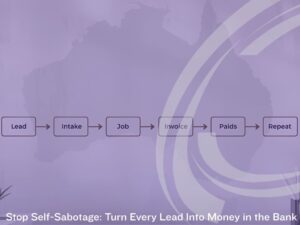The Gap We All Rely On

How Charities and Not-for-Profits Hold Communities Together, And Why Proper Funding Matters
Every suburb and town relies on a network of charities and not-for-profits. These NFPs keep families housed, feed people in crisis, support older Australians, include people with disability, and run outreach for young people who have fallen through the cracks. Government funds a large share of the work and sets the standards. Yet demand outstrips public budgets, program rules lag behind real life, and thin margins leave services exposed to shocks.
The national charity dataset confirms the scale. Total charity income is in the hundreds of billions of dollars a year. Roughly half comes from the government through grants and service contracts. The rest comes from donations, philanthropy and earned income. That pattern tells a simple truth. Public money is essential; however, community organisations raise and earn a similar amount to meet local needs.
What public grants pay for, and why the job is bigger than the budget
Government grants and purchase-of-service contracts fund regulated programs in aged care, disability, health, child protection and housing. The states and territories invest billions each year in housing and homelessness. They do the same in child protection and allied services. Commonwealth programs also purchase large volumes of care. This funding is significant, and it is vital to stability.
It is also incomplete. Program prices do not always keep pace with wage awards, insurance, transport, rents and compliance. Grants often fund outputs on paper but underprice the hours required to do the work safely. NFPs cover the shortfall with philanthropy, donations and trading income. They do it because the need is local and immediate. The result is a constant balancing act between rosters, waiting lists and the practical costs of service delivery.
How much of each dollar reaches the frontline
There is a persistent claim that too much money never reaches the frontline. The sector-wide figures tell a different story. Most charity spending goes on people and direct operating inputs. Staff costs are the largest line because care is human work. Vehicles, clinical supplies, food, utilities and outreach are the work as well. Administration and governance are necessary but remain a smaller share. For regulated services, safe staffing and sound oversight are not overhead in the pejorative sense. They are the preconditions for safe, effective care.
This matters for trust. When the bulk of spending in charities and not-for-profits is people and program inputs, donors and taxpayers can be confident that funds support real outcomes rather than paperwork.
Why the government cannot do everything directly
Public systems must set consistent rules and manage fiscal risk across decades. They share responsibilities across levels of government. They also fund schools, hospitals, defence, infrastructure and pensions at the same time. Long-run budget pressures are real. Health, aged care, the NDIS, defence and interest costs will drive public spending for many years. Even if growth holds, those demands limit how far the government can extend direct delivery.
This is where community organisations step in. NFPs can start a small pilot quickly, shift hours and locations, and weave multiple supports together without waiting for a new budget line. They reach people who do not trust large systems. They can redirect staff and volunteers within hours when fire, flood or a public health event strikes. Government funds the base. Charities and not-for-profits extend that base, innovate at the edges and deal with needs that do not fit neatly into program rules.
A national map of the sector
The charity footprint is spread across every jurisdiction. New South Wales hosts the largest share of registered entities, followed by Victoria and Queensland. Western Australia, South Australia and Tasmania each carry smaller but important shares. The Australian Capital Territory and the Northern Territory host fewer organisations by count, yet they often manage high-cost remote and specialist work. Average revenue per entity varies by state, reflecting service mix, cost structures and the presence of very large providers in some locations.
While there is no single table that cleanly totals “state grants to charities” for all jurisdictions, two public sources sketch the picture. The national charity dataset shows where organisations operate and how they earn and spend. The Report on Government Services shows, by state and territory, what the government spends on programs that are largely delivered by community partners under contract. Together, they point to the same conclusion. The sector is woven through every state economy and holds up critical parts of everyday life.
What grants cover, in percentage terms, and what remains unfunded
Using the national totals, government revenue accounts for roughly half of charity income. The other half comes from fundraising, bequests, philanthropy and fees for goods and services. That split is not a rounding error. It is the sector’s operating model. Grants and contracts pay for core, regulated services. Community organisations find the rest to keep doors open, extend hours, respond to local shocks and try new approaches.
The practical impact is visible. When donations fall or trading income dips, outreach vans skip nights, caseworkers carry heavier loads, and waiting lists grow. When philanthropy rises, pilot programs scale and more people get help sooner. The reliance on mixed income is a strength in terms of responsiveness, and a risk when the economy stutters.
Philanthropy helps, but it cannot replace public purchase of essential care.
Donations and bequests move with confidence and with news cycles. Major gifts can transform a service; however, they are not a stable replacement for public funding of essential care. The best results come from a balanced approach. Government funds safe, regulated baselines. Private giving supports innovation and unfunded needs. Charities and not-for-profits join the dots and feed lessons back into policy.
State-by-state signals from public reports
Housing and homelessness programs in every state and territory account for many billions of dollars each year. Child protection, family services and youth justice add more. Health spending by state also runs to many tens of billions. A large share of practical delivery runs through NFPs, because they are configured to provide local casework, tenancy support, therapeutic programs and community health. If state budgets flatten or contract, the consequences are immediate in community organisations. Hours drop. Staff leave. Rebuilding capability later costs more.
The available public reports are clear enough to guide decisions. They show sustained demand and material investment, and they point to the need for contract prices that keep pace with costs, payment terms that protect cash flow, and reporting that is simple and consistent.

What communities lose when funding fails
The costs of under-funding are visible within weeks.
- Crisis lines close early.
- Food hubs reduce days.
- Casework teams exceed safe caseloads and burn out.
- Tenancies fall over for want of basic support.
- Regional clinics cut services because an ageing vehicle cannot be replaced.
Communities lose more than a service. They lose stability and connection. Businesses feel it when staff struggle with care responsibilities and crises. Councils feel it when local amenity slips. Schools feel it in attendance and engagement. A dollar that keeps people housed and supported today avoids many dollars in health, justice and lost productivity tomorrow.
Pricing for real costs and paying on time
Community services funding works best when prices reflect the real costs of safe delivery. That means aligning rates with wage awards, travel, insurance, rent, safeguarding, training and IT. It means multi-year agreements where services are ongoing. It means replacing repetitive forms with shared metrics and simple dashboards. Most of all, it means paying on time. NFPs cannot borrow cheaply. Cash-flow strain leads to staff churn and lost capacity. Payment discipline is a no-cost way to protect outcomes.
Where better tax compliance can boost community services funding
There is a practical way to lift community services funding without a blunt across-the-board tax rise. Keep closing gaps in the existing rules and ensure the largest companies and multinationals pay what the law intends. Corporate Tax Transparency reports list hundreds of large entities paying no income tax in a given year, sometimes for legitimate reasons such as losses or offsets. At the same time, the Tax Avoidance Taskforce has delivered billions in extra revenue through enforcement and settlements.
Policy is moving in the right direction. Parliament has adopted global minimum tax rules aligned with the OECD’s Pillar Two framework. New integrity measures limit excessive debt deductions and profit shifting through intangibles. Independent budget officers have noted that sustained investment in enforcement can improve the fiscal balance by billions over the medium term. Earmarking even a portion of that uplift for community services would make a visible difference on the ground.
This is not about punishing success. It is about a level playing field. When the biggest market participants meet their obligations, governments can fund stable programs, and charities and not-for-profits can plan staffing and expand proven services with confidence.
Why a stronger community sector helps business as well as government
Enterprises of all sizes rely on stable communities. NFPs reduce absenteeism and improve participation. They keep young people engaged, support people back to work, and provide care when families face illness or crisis. That is good for employers, good for local suppliers and good for growth. Stronger community services funding is not a cost without return. It is an investment that reduces future expenditure and expands the workforce.
Transparency builds confidence
Public trust grows when data is easy to find and compare. The national charity dataset, the ATO’s transparency reports, GrantConnect and the Report on Government Services allow anyone to follow the money. Publishing consistent state-by-state summaries of grants to charities and NFPs would improve confidence further and help governments target funding to the best outcomes.
Bringing it together
Australia works best when every sector does what it does well. Government sets standards and funds baselines. Charities and not-for-profits deliver flexible, human-centred work where the rules meet real life. Businesses create jobs and benefit when communities are stable. The numbers show that public funding covers about half of sector income, and that community organisations generate the rest to keep services running. That mix keeps people housed, fed, healthy and included.
Lifting community services funding is a choice. Index contract prices to real costs. Pay on time. Keep reporting lean. Close tax gaps at the top end. Use the extra capacity to expand proven programs and build new ones where the need is rising. If we value safe homes, dignity in ageing, accessible disability support and inclusive communities, then we should fund the partners who deliver those outcomes every day.
If you lead a community organisation, a social enterprise, or a business that partners with the sector, SBAAS can help you strengthen funding models, simplify reporting and present your impact with evidence. Book an appointment to discuss your needs or learn more about our approach and advocacy.
Visit our About page:
Sources
- Australian Charities and Not-for-profits Commission. (2025). Australian Charities Report, 11th edition. https://www.acnc.gov.au/sites/default/files/documents/2025-06/ACNC%20Australian%20Charities%20Report%20-%2011th%20edition.pdf
- Australian Charities and Not-for-profits Commission. (n.d.). Australian Charities Report – Topic guide. https://www.acnc.gov.au/tools/topic-guides/australian-charities-report
- Productivity Commission. (2025). Report on Government Services 2025: Housing and homelessness. https://www.pc.gov.au/ongoing/report-on-government-services/2025/housing-and-homelessness
- Productivity Commission. (2025). Report on Government Services 2025: Child protection services (Part F, section 16). https://www.pc.gov.au/ongoing/report-on-government-services/2025/community-services/child-protection
- Australian Institute of Health and Welfare. (2024). Health expenditure Australia 2022–23: Spending by state. https://www.aihw.gov.au/reports/health-welfare-expenditure/health-expenditure-australia-2022-23/contents/main-visualisations/spending-by-state
- Australian Government Treasury. (2023). 2023 Intergenerational Report. https://treasury.gov.au/publication/2023-intergenerational-report
- Australian Taxation Office. (2024). Corporate tax transparency – our reports. https://www.ato.gov.au/businesses-and-organisations/corporate-tax-measures-and-assurance/large-business/corporate-tax-transparency/our-corporate-tax-transparency-reports
- Australian Taxation Office. (2024). Tax Avoidance Taskforce highlights 2023–24. https://www.ato.gov.au/about-ato/tax-avoidance/tax-avoidance-taskforce/tax-avoidance-taskforce-highlights-2023-24
- Australian Government Treasury. (n.d.). Multinational tax integrity package. https://treasury.gov.au/policy-topics/taxation/multinational-tax
- Parliamentary Budget Office. (2025). Targeting multinational tax avoidance (Report no. ECR-2025-3555). https://www.pbo.gov.au/sites/default/files/2025-06/PBO-ECR-2025-3555-Targeting%20multinational%20tax%20avoidance.pdf
- Institute of Community Directors Australia. (2025, February 17). Aussie grants reach $125 billion. https://www.communitydirectors.com.au/articles/total-value-of-australian-grants-each-year
SmartyGrants. (n.d.). Aussie grants reach $125 billion. https://www.smartygrants.com.au/articles/total-value-of-australian-grants-each-year

Eric Allgood is the Managing Director of SBAAS and brings over two decades of experience in corporate guidance, with a focus on governance and risk, crisis management, industrial relations, and sustainability.
He founded SBAAS in 2019 to extend his corporate strategies to small businesses, quickly becoming a vital support. His background in IR, governance and risk management, combined with his crisis management skills, has enabled businesses to navigate challenges effectively.
Eric’s commitment to sustainability shapes his approach to fostering inclusive and ethical practices within organisations. His strategic acumen and dedication to sustainable growth have positioned SBAAS as a leader in supporting small businesses through integrity and resilience.
Qualifications:
- Master of Business Law
- MBA (USA)
- Graduate Certificate of Business Administration
- Graduate Certificate of Training and Development
- Diploma of Psychology (University of Warwickshire)
- Bachelor of Applied Management
Memberships:
- Small Business Association of Australia –
International Think Tank Member and Sponsor - Australian Institute of Company Directors – MAICD
- Institute of Community Directors Australia – ICDA
- Australian Human Resource Institute – CAHRI
Our Consulting Services

Management Consulting
Compliance & Risk

Professional Writing Services
Consistency in Communication

Small Business Consulting
Sustainable Businesses

Start-ups
Set-up for Success
Further reading

Start 2026 with stronger cash flow, not more stress
If you want a bigger 2026, you need tighter payment systems. This practical guide shows Australian businesses how to protect their cash flow from late payments, reduce slow-paying clients, and recover overdue debts using the right state-by-state pathways, without burning relationships or wasting weeks in follow-ups.

Drowning in Paperwork: The new reality for Australia’s smallest employers
Australia’s smallest employers now face big-business expectations on safety, conduct and culture. It is no longer enough to download a template and hope for the best. Micro and small businesses need effective workplace policies and procedures that align with how they work, behave, and lead. This article explains the real compliance burden, why “tick-box” documents fail, and how SBAAS helps business owners build practical, human systems that protect people, reduce risk and support sustainable growth.

Pragmatism Wins: How Australian Businesses Turn AI Hype Into Real Results
Australian organisations are moving beyond experiments. This article shows how Australian businesses across all sectors and sizes can scale value, manage risk, and boost productivity with pragmatic AI.

Stop Self-Sabotage: Turn Every Lead Into Money in the Bank
Winning work is hard. Losing time and cash to clunky admin is optional. This guide shows how to design an automated business process that captures leads, books jobs, issues invoices with timely reminders, and keeps clients returning. Plain English, practical steps, and a sharp focus on simplification, speed, and cash flow.

Seeing the Wrong Picture: What Most Business Owners Miss When Reviewing Their Performance
Business owners aren’t short on data, but many are missing what matters most. Discover what most business owners miss when reviewing their performance and how to shift from surface-level tracking to strategic insight.

Navigating Economic Uncertainty: A Roadmap for Australian Small Businesses
Discover how global economic shifts and local consumer sentiment are reshaping Australian small businesses. Equip yourself with actionable insights and strategies to thrive amidst uncertainty.
SBAAS Events
What our clients are saying about us
Posted onTrustindex verifies that the original source of the review is Google. Eric and Trudi recently wrote a tender for me and the experience was amazing. I went into the process in a state of complete overwhelm. Eric was able to break it down into achievable chunks for me, and reassure me that I had a great service and business model to offer. I came out the other end of the process with all of my business policies, a better understanding of my offer, and a foundation to launch all future tender applications. Eric took all of my information and turned it into a pretty package that I could market.Posted onTrustindex verifies that the original source of the review is Google. SBAAS were fantastic to work with on a detail-heavy tender with a tight turnaround. Their team helped us shape and compile our content to deliver a strong, high-quality submission. Highly recommend SBAAS to anyone looking for strategic support with tender development, with a touch of good humour along the way.Posted onTrustindex verifies that the original source of the review is Google. We engaged SBAAS to support the development of a complex government tender and couldn’t be happier with the outcome. SBAAS' professionalism, attention to detail, and ability to quickly understand our business and translate that into a compelling, well-structured submission were exceptional. They were responsive, collaborative, and a genuine extension of our team. Highly recommend for anyone looking for strategic, high-quality bid and tender writing support.Posted onTrustindex verifies that the original source of the review is Google. Eric and Team go above and beyond. They do an excellent job with researching to get everything that is legally required for Policies and QMS. Would recommend them them to everyone especially all the bookkeepers and accountants. Thank you guys, and extreme job. Love you work as always. 😀Posted onTrustindex verifies that the original source of the review is Google. Extremely professional and far exceeded by expectations. I will definitely be using their services again and highly recommend them. They have a spirit of excellence in everything they do which shines through when dealing with them.Posted onTrustindex verifies that the original source of the review is Google. Impressive consulting experience! The team is highly professional, with a hands-on approach that adds real value. Their dedication and expertise truly stand out. Highly recommended!Posted onTrustindex verifies that the original source of the review is Google. Super knowledgable company that provides great advice and support for small business. Super friendly, highly recommend.Posted onTrustindex verifies that the original source of the review is Google. As a new business owner, I recognised the value in seeking a business coach to help me achieve significant goals. After a disappointing experience with a previous coach, I was initially hesitant to try again. However, after seeing SBAAS's complimentary action plan, I thought there was no harm in investigating. Eric quickly identified gaps in my systems, and through a few targeted adjustments, I saw an immediate increase in both leads and sales. These changes also improved profitability—highlighting a major issue I hadn’t been aware of, as my previous coach’s guidance had me working for less than $7 per hour! I look forward to continuing working with Eric.
